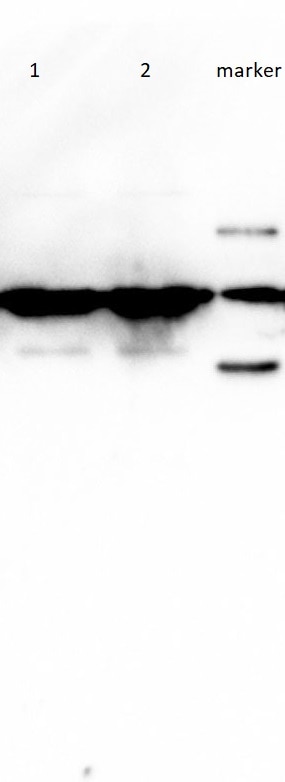| Reactivity | MuSpecies Glossary |
| Applications | WB, ELISA, IHC |
| Clonality | Polyclonal |
| Host | Donkey |
| Conjugate | HRP |
| Format | Pre-adsorbed |
| Concentration | LYOPH |
| Description | Purity > 95% based on SDS-PAGE. Donkey serum was obtained from healthy animals of US origin and under the care of a registered veterinarian. After reconstituted, prepare fresh working dilution daily. Store lyophilized material at 2-8C. For long term storage after reconstitution, dilute with 50% glycerol and store at -20C as a liquid. |
| Immunogen | This Donkey anti-Mouse IgG (H+L) Secondary Antibody [HRP] (Pre-adsorbed) was developed against purified mouse IgG (H&L). |
| Specificity | Based on IEP, this Donkey anti-Mouse IgG (H+L) Secondary Antibody [HRP] (Pre-adsorbed) heavy gamma chains on mouse IgG and light chains on all mouse immunoglobulins. This antibody has been pre-adsorbed against bovine, chicken, goat, guinea pig, hamster, horse, human, rabbit, rat or sheep IgG |
| Isotype | IgG |
| Clonality | Polyclonal |
| Host | Donkey |
| Purity | Affinity purified |
| Dilutions |
|
|
| Application Notes | This conjugate is suitable for all immunoassay applications. |
|
| Readout System | ||
| Reviewed Applications |
|
| Storage | Store lyophilized antibody at 4C. Mix reconstituted liquid with an equal volume of glycerol, aliquot contents and freeze at -20C or below for long term storage. |
| Buffer | 10 mM Sodium Phosphate, 0.15 M Sodium Chloride, pH 7.2, 1 % (w/v) BSA, Protease/IgG free |
| Preservative | 0.1% Kathon |
| Concentration | LYOPH |
| Purity | Affinity purified |
| Reconstitution Instructions | Rehydrate with 1.1 ml of deionized water and let stand 30 minutes at room temperature to dissolve. (Product has been overfilled to ensure complete recovery.) Centrifuge to remove any particulates. Prepare fresh working dilution daily. |
| Images | Ratings | Applications | Species | Date | Details | ||||||||||
|---|---|---|---|---|---|---|---|---|---|---|---|---|---|---|---|

Enlarge |
reviewed by:
Verified Customer |
WB | Human | 06/07/2020 |
Summary
Comments
|
Research Areas for IgG (H+L) Antibody (NBP1-75123)Find related products by research area.
|
The concentration calculator allows you to quickly calculate the volume, mass or concentration of your vial. Simply enter your mass, volume, or concentration values for your reagent and the calculator will determine the rest.